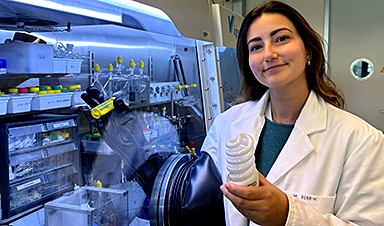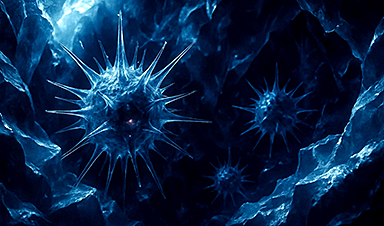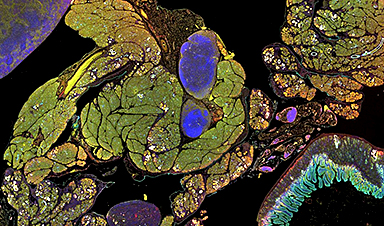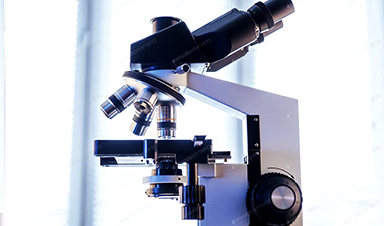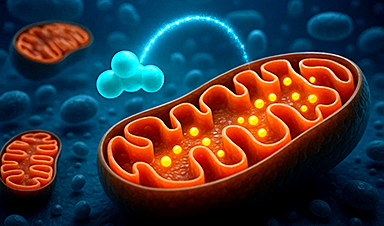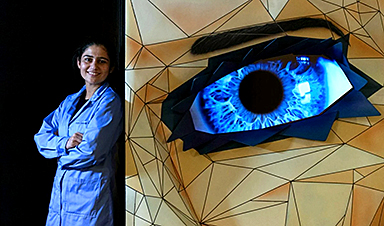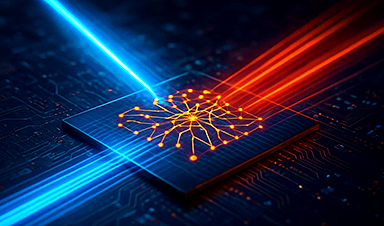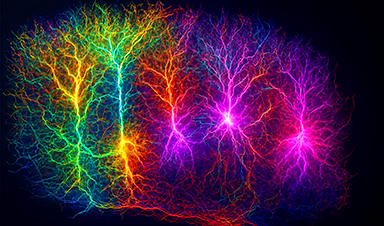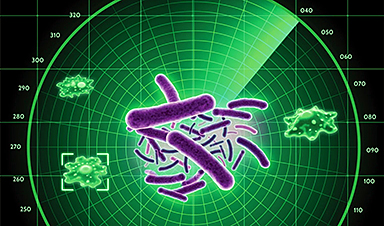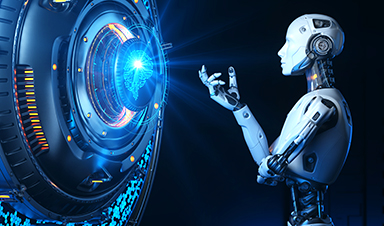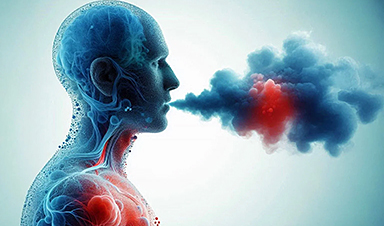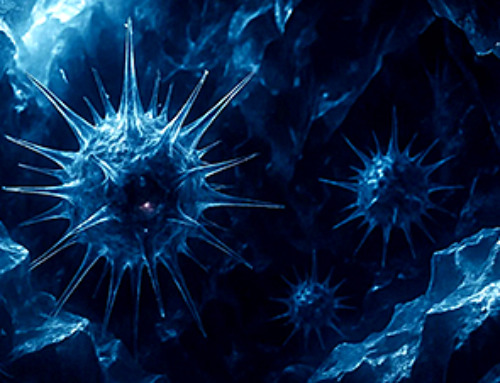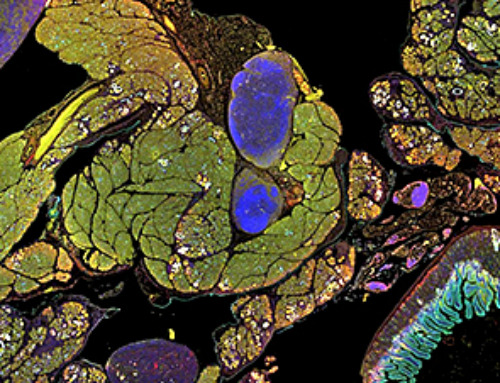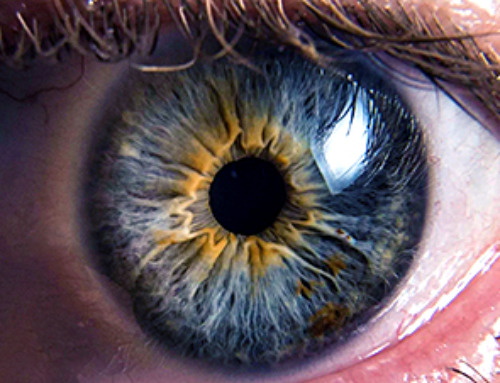Scientists are developing a process inspired by nature that efficiently recovers europium from old fluorescent lamps. The approach could lead to the long-awaited recycling of rare earth metals.
- A small molecule that naturally serves as a binding site for metals in enzymes also proves useful for separating certain rare earth metals from each other.
- In a proof of concept, the process extracts europium directly from fluorescent powder in used energy-saving lamps in much higher quantities than existing methods.
- The researchers are now working on expanding their approach to other rare earth metals. They are in the process of founding a start-up to put the recycling of these raw materials into practice.
Rare earth metals are not as rare as their name suggests. However, they are indispensable for the modern economy. After all, these 17 metals are essential raw materials for digitalization and the energy transition. They are found in smartphones, computers, screens, and batteries – without them, no electric motor would run and no wind turbine would turn. Because Europe is almost entirely dependent on imports from China, these raw materials are considered to be critical.
However, rare earth metals are also critical because of their extraction. They always occur in compound form in natural ores – but as these elements are chemically very similar, they are difficult to separate. Traditional separation processes are therefore very chemical- and energy-intensive and require several extraction steps. This makes the extraction and purification of these metals expensive, resource- and time-consuming and extremely harmful to the environment.
Innovative Recycling Techniques
“Rare earth metals are hardly ever recycled in Europe,” says Victor Mougel, Professor at the Laboratory of Inorganic Chemistry at ETH Zurich. A team of researchers led by Mougel wants to change this. “There is an urgent need for sustainable and uncomplicated methods for separating and recovering these strategic raw materials from various sources,” says the chemist.
In a study recently published in the journal Nature Communications, the team presents a surprisingly simple method for efficiently separating and recovering the rare earth metal europium from complex mixtures including other rare earth metals.
Inspired by Nature
Marie Perrin, a doctoral student in Mougel’s group and first author of the study, explains: “Existing separation methods are based on hundreds of liquid-liquid extraction steps and are inefficient – the recycling of europium has so far been impractical.” In their study, they show how a simple inorganic reagent can significantly improve separation. “This allows us to obtain europium in a few simple steps – and in quantities that are at least 50 times higher than with previous separation methods,” says Perrin.
The key to this technique can be found in small inorganic molecules featuring four sulfur atoms around tungsten or molybdenum: tetrathiometallates. The researchers were inspired by the world of proteins. Tetrathiometallates are found as a binding site for metals in natural enzymes and are used as active substances against cancer and copper metabolism disorders.
For the first time, tetrathiometallates are now also being used as ligands for the separation of rare earth metals. Their unique redox properties come into play here, reducing europium to its unusual divalent state and thus simplifying separation from the other trivalent rare earth metals.
Rapid recycling of europium from fluorescent lamps. Credit: Marie Perrin / ETH Zurich
Practical Applications and Environmental Impact
“The principle is so efficient and robust that we can apply it directly to used fluorescent lamps without the usual pre-treatment steps,” says Mougel.
Electronic waste is an important but as yet underutilized source of rare earth metals. “If this source were tapped into, the lamp waste that Switzerland currently sends abroad to be disposed of in a landfill could be recycled here in Switzerland instead,” says Mougels. In this way, lamp waste could serve as an urban mine for europium and make Switzerland less dependent on imports.
“Our recycling approach is significantly more environmentally friendly than all conventional methods of extracting rare earth metals from mineral ores.”
— Victor Mougel
In the past, europium was mainly used as phosphor in fluorescent lamps and flat screens, which led to high market prices. As fluorescent lamps are now gradually being phased out, demand has fallen, so that the previous recycling methods for europium are no longer economically viable. More efficient separation strategies are nevertheless desirable and could help to utilize the vast quantities of cheap fluorescent lamp waste whose rare earth metal content is around 17 times higher than in natural ores.
Strategic Recycling Efforts
This makes it all the more urgent to recover rare metals at the end of a product’s life and keep them in circulation – but the recovery rate of rare earth elements in the EU is still below one percent.
In principle, any separation process for rare earth metals can be used both for extraction from ore and for recovery from waste. With their method, however, the researchers are deliberately focussing on recycling the raw materials, as this makes much more ecological and economic sense. “Our recycling approach is significantly more environmentally friendly than all conventional methods for extracting rare earth metals from mineral ores,” says Mougel.
New Ventures and Commercialization
The researchers have patented their technology and are in the process of founding a start-up called REEcover to commercialize it in the future. They are currently working on adapting the separation process for other rare earth metals such as neodymium and dysprosium, which are found in magnets. If this is successful, Marie Perrin wants to build up the start-up after her doctorate and establish the recycling of rare earth metals in practice.
Reference: “Recovery of europium from E-waste using redox active tetrathiotungstate ligands” by Marie A. Perrin, Paul Dutheil, Michael Wörle and Victor Mougel, 3 June 2024, Nature Communications.
DOI: 10.1038/s41467-024-48733-z
News
Studies detail high rates of long COVID among healthcare, dental workers
Researchers have estimated approximately 8% of Americas have ever experienced long COVID, or lasting symptoms, following an acute COVID-19 infection. Now two recent international studies suggest that the percentage is much higher among healthcare workers [...]
Melting Arctic Ice May Unleash Ancient Deadly Diseases, Scientists Warn
Melting Arctic ice increases human and animal interactions, raising the risk of infectious disease spread. Researchers urge early intervention and surveillance. Climate change is opening new pathways for the spread of infectious diseases such [...]
Scientists May Have Found a Secret Weapon To Stop Pancreatic Cancer Before It Starts
Researchers at Cold Spring Harbor Laboratory have found that blocking the FGFR2 and EGFR genes can stop early-stage pancreatic cancer from progressing, offering a promising path toward prevention. Pancreatic cancer is expected to become [...]
Breakthrough Drug Restores Vision: Researchers Successfully Reverse Retinal Damage
Blocking the PROX1 protein allowed KAIST researchers to regenerate damaged retinas and restore vision in mice. Vision is one of the most important human senses, yet more than 300 million people around the world are at [...]
Differentiating cancerous and healthy cells through motion analysis
Researchers from Tokyo Metropolitan University have found that the motion of unlabeled cells can be used to tell whether they are cancerous or healthy. They observed malignant fibrosarcoma [...]
This Tiny Cellular Gate Could Be the Key to Curing Cancer – And Regrowing Hair
After more than five decades of mystery, scientists have finally unveiled the detailed structure and function of a long-theorized molecular machine in our mitochondria — the mitochondrial pyruvate carrier. This microscopic gatekeeper controls how [...]
Unlocking Vision’s Secrets: Researchers Reveal 3D Structure of Key Eye Protein
Researchers have uncovered the 3D structure of RBP3, a key protein in vision, revealing how it transports retinoids and fatty acids and how its dysfunction may lead to retinal diseases. Proteins play a critical [...]
5 Key Facts About Nanoplastics and How They Affect the Human Body
Nanoplastics are typically defined as plastic particles smaller than 1000 nanometers. These particles are increasingly being detected in human tissues: they can bypass biological barriers, accumulate in organs, and may influence health in ways [...]
Measles Is Back: Doctors Warn of Dangerous Surge Across the U.S.
Parents are encouraged to contact their pediatrician if their child has been exposed to measles or is showing symptoms. Pediatric infectious disease experts are emphasizing the critical importance of measles vaccination, as the highly [...]
AI at the Speed of Light: How Silicon Photonics Are Reinventing Hardware
A cutting-edge AI acceleration platform powered by light rather than electricity could revolutionize how AI is trained and deployed. Using photonic integrated circuits made from advanced III-V semiconductors, researchers have developed a system that vastly [...]
A Grain of Brain, 523 Million Synapses, Most Complicated Neuroscience Experiment Ever Attempted
A team of over 150 scientists has achieved what once seemed impossible: a complete wiring and activity map of a tiny section of a mammalian brain. This feat, part of the MICrONS Project, rivals [...]
The Secret “Radar” Bacteria Use To Outsmart Their Enemies
A chemical radar allows bacteria to sense and eliminate predators. Investigating how microorganisms communicate deepens our understanding of the complex ecological interactions that shape our environment is an area of key focus for the [...]
Psychologists explore ethical issues associated with human-AI relationships
It's becoming increasingly commonplace for people to develop intimate, long-term relationships with artificial intelligence (AI) technologies. At their extreme, people have "married" their AI companions in non-legally binding ceremonies, and at least two people [...]
When You Lose Weight, Where Does It Actually Go?
Most health professionals lack a clear understanding of how body fat is lost, often subscribing to misconceptions like fat converting to energy or muscle. The truth is, fat is actually broken down into carbon [...]
How Everyday Plastics Quietly Turn Into DNA-Damaging Nanoparticles
The same unique structure that makes plastic so versatile also makes it susceptible to breaking down into harmful micro- and nanoscale particles. The world is saturated with trillions of microscopic and nanoscopic plastic particles, some smaller [...]
AI Outperforms Physicians in Real-World Urgent Care Decisions, Study Finds
The study, conducted at the virtual urgent care clinic Cedars-Sinai Connect in LA, compared recommendations given in about 500 visits of adult patients with relatively common symptoms – respiratory, urinary, eye, vaginal and dental. [...]
